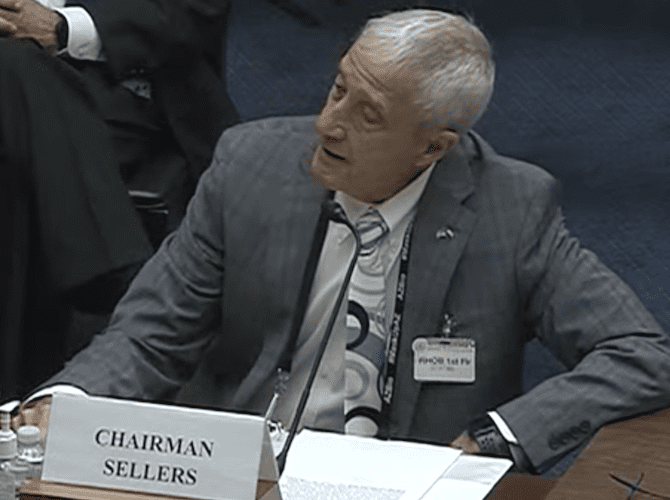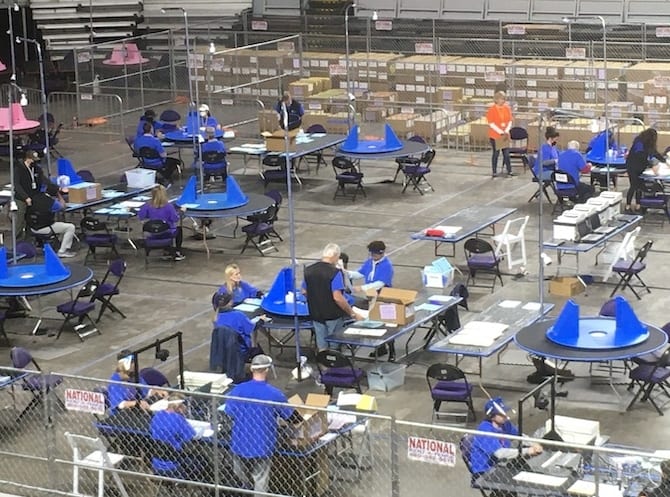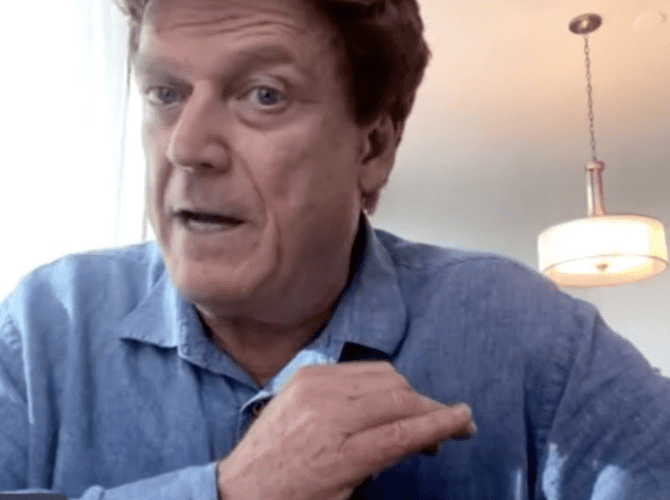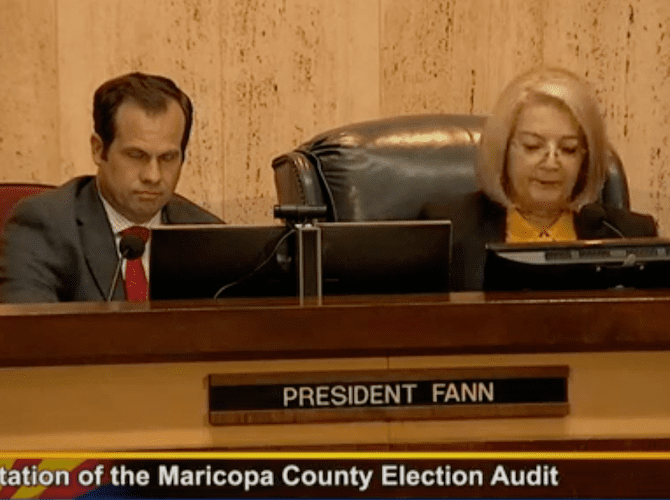Arizona “Audit’s” Shakespearean Twists: High Claims, Low Tactics
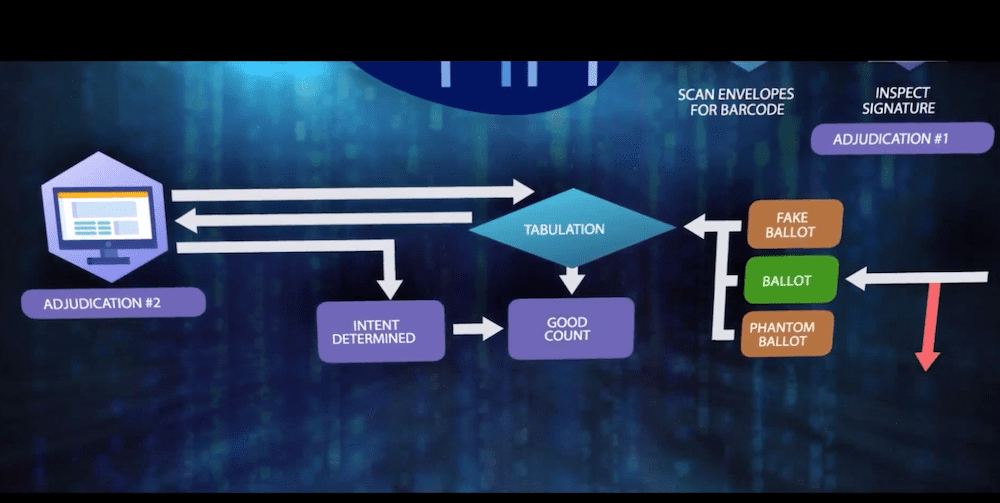
(Photo credit: Screenshot from “The Deep Rig” showing alleged steps to pad vote count, which critics say Trump supporters could use to alter 2020 election review results.)
Two competing efforts to assess the accuracy of Arizona’s 2020 presidential election results have reached dramatic turning points as July began. An effort led by Republican state senators and pro-Trump activists has erupted in a new wave of false claims about the presidential election results. Meanwhile, an outside effort led by experienced election auditors was poised to release the most detailed factual data yet by which the integrity of the election could be assessed.
The counterpoint was a stunning reflection of the most dysfunctional aspects of contemporary American politics. On one side are Trump supporters, whose endlessly high-minded descriptions of their patriotism and zeal to seek “the truth” are followed by the lowest of tactics—making false claims, hurling accusations and innuendo, and presenting no facts that can be independently replicated. Their vanities, tactics and anger are as old as Shakespeare’s depictions of ancient Rome, and reveal something about the dark underbelly of political life.
On the other side is a different and more credible kind of truth-seeker; those who have spent years learning the intricacies of a complex public process that few people study—in this case, how elections are run—and have gathered factual evidence, which can be hard to parse, but presents replicable conclusions. In essence, their goal is to find a factual trail about who won, not opinions and smears.
“[Arizona Senate President] Karen Fann, at some point, has to say that what they’re doing is going to produce an accurate result, and so far she’s provided absolutely no proof of that,” said Tucson’s Benny White, a longtime election observer for the Arizona Republican Party who has led a team—not on anybody’s payroll—that has continued to release analyses of Trump’s loss in Arizona based on the actual building blocks of the official 2020 election results.
Facts and Fantasy
On the eve of the July 4th weekend, White’s three-member team of retired election auditors—with decades of collective experience—are finalizing their latest report. Its focus and content are precisely what the Arizona Senate’s pro-Trump contractors had failed to produce in the preceding two months: ballot inventories and presidential vote-counting totals from each of the hundreds of ballot storage boxes in Maricopa County, home to Phoenix, where 2.1 million ballots were cast and had been tallied and stored in 10,341 batches.
“They [the Senate contractors] did not understand the structure of the data that is involved in the public records of an election… how all of those things relate to each other and have to be reconciled,” White said. “They went down this path of doing what they did [at the end of 2020] in Fulton County, Pennsylvania, with [reviewing] 1,000 ballots; you know, let’s pull the ballots out of the boxes and start [hand-]counting the [voters’ ink] marks. Well, that doesn’t get it done.”
“They’re doing a hand count, and the hand count needs an audit. They don’t have the mechanism to do an audit—and that’s where we come in,” said Larry Moore, who founded Clear Ballot, a federally certified firm that helps local and state governments to count and verify election results, and who has helped White. “Our goal is to produce an independently generated result that matches the way that they collected the data… they didn’t know what they were doing.”
But the pro-Trump side has had a different agenda. It was seen on Saturday, June 26, in Phoenix, where the leading private funders of the state Senate’s review, their lead contractor and key advisers premiered a film called “The Deep Rig.”
The film, predictably, concluded that the presidential election in Arizona—and in five other states: Nevada, Wisconsin, Pennsylvania, Michigan and Georgia—was fraud-ridden and stolen from Trump. But it offered no new evidence. Instead, it proclaimed the great patriotism of their cause and quickly resurrected stolen election claims that had been rejected months ago, not just by election officials and academics, but by more than 60 state and federal courts that rejected lawsuits from the Trump campaign and its allies for lack of evidence.
Perhaps the most eyebrow-raising aspect of the premiere followed the film’s showing when a panel discussion unmasked the identity of an on-screen cybersecurity expert whose voice had been altered and image concealed while speaking of conspiracies to steal a second term from Trump. The voice turned out to belong to the Arizona Senate’s lead contractor, Cyber Ninjas CEO Doug Logan, whose inquiries costing several million dollars have been assailed as amateurish and partisan.
“The Deep Rig video featured Doug Logan, CEO of CyberNinjas, the prime contractor in the hand count in Maricopa,” wrote Raymond Lutz, executive director of Citizens’ Oversight, an election auditing nonprofit that had been negotiating with the Arizona Senate to conduct an audit that compared digital images of every 2020 ballot to the officially certified results, in a June 29 letter to Fann. “Throughout the video, he was shown with voice altered and with his image concealed. Patrick Byrne, the producer of the video tried to connect the fraud they were investigating to human and child trafficking or molestation, with the CIA and it appears this was an effort to make it appear Doug Logan may actually be the anonymous ‘Q’ that is behind the Q-anon movement.”
“Worse, you [Fann] were recognized at the start of the event to a standing ovation [even though she was not present], and Arizona State Sen. Sonny Borrelli, chair of the Senate Government Committee, was in attendance,” Lutz’s letter said. “Senate Liaison Ken Bennett appeared in it [the film]. It was funded by the same group that is funding millions of dollars of expenses in the hand count. We have deep concerns about these events and this video, as it is filled with false, debunked claims, and yet finishes with the statement that we can’t let this sort of thing happen ‘again’—meaning it already happened once, and that it occurred in Maricopa County.”
Lutz’s letter underscored that the film and panel discussion that followed “will be regarded as the report” of the state Senate investigation, even though neither the film nor the Cyber Ninjas-supervised hand count of Maricopa County’s ballots provided any evidence that the 2020 results were not accurate. His letter was followed by a nine-page summary that listed and refuted the film’s most odious claims: that election night vote counts are not reliable; that voting machines in Antrim County, Michigan, had been hacked; that the CIA and domestic hate groups were behind (unproven) election fraud; that Maricopa County would have 300,000 to 800,000 fraudulent votes; that ballots were tied to phantom voters and counted; that Arizona ballots were forged overseas; that vote-by-mail envelopes were destroyed; and that voting machines overwrote votes cast on paper ballots and secretly paired those ballots with legal voters who did not vote last fall.
The inaccuracy of the claims made in “The Deep Rig” underscored how facts about the ways in which elections are run—despite all high-minded verbiage about truth-seeking—would not deter the partisan agenda of the film’s producers, its funders, those featured in the film or on stage in the Phoenix auditorium where it premiered. As Joseph Flynn, the younger brother of Trump loyalist and ex-General Mike Flynn told the crowd, “From our perspective, very simply, this is the hill that we are going to die on.”
Also attending the premiere of “The Deep Rig” was Patrick Byrne, the former CEO of Overstock.com, whose book of the same title was the basis of the film, and who bankrolled the film. Byrne is also among the top private donors to the Arizona Senate’s inquiry and in the film claimed that the election was stolen from Trump.
“You do it with narrow deep fraud in six cities,” he said in the film, listing Las Vegas, Phoenix, Detroit, Milwaukee, Philadelphia and Atlanta. “As I explained earlier, to steal the nation, you don’t really need to cheat across the nation.”
A New Worry: Forged Evidence?
In short, the inquiries led by Cyber Ninjas have not attempted to assess the administration of the election in Arizona’s most populous county. But in a possibly troubling new development, the pro-Trump activists who are funding and leading the Arizona Senate’s review have been dropping hints that they may be tweaking the evidence that they collected to boost their false claim that Trump won.
The hints center on one of the processes that just ended at Phoenix’s Veterans Memorial Coliseum—photographing and examining the 2.1 million paper ballots cast last fall in Maricopa County. Their widely ridiculed “paper examination” was not exclusively looking for bamboo fibers to confirm that ballots had been printed in Asia and smuggled into Phoenix’s vote-counting centers, a conspiracy theory that has circulated since Trump’s 10,457-vote statewide loss to Biden.
Instead, the inquiry, which used high-definition digital cameras to photograph every ballot, could set the stage for the cutting-and-pasting of votes—replacing images of votes with marked ovals for Joe Biden with votes for Trump—and then inserting the altered images into their underlying data used to tally results.
That scenario might sound far-fetched; however, it comes from “The Deep Rig.” Among the film’s claims is a series of diagrams that purportedly show how votes were stolen. The sequence is that fake ballots were fabricated, smuggled into the official vote-counting data, paired with legal voters who did not vote last fall, and end up being counted—where they lay hidden like needles in a haystack.
“The above statements [made in the film following the diagrams] are false,” wrote Lutz in his letter to Fann. “In actuality, the adjudication process does NOT replace the original [ballot] image nor does it overwrite the [official] cast-vote-record.”
However, that scenario could be used by Cyber Ninjas to forge digital ballot images with Trump votes—in their secretive post-scanning process—and then pad Cyber Ninjas’ privately compiled vote count, Lutz said.
“What is even more concerning is that this scenario looks like a scheme that could be employed by the Cyber Ninjas to insert ballots into the system,” he continued. “This is one more reason we [Citizens’ Oversight] must perform a ballot image audit using the [county’s] original [ballot] images to thwart this possibility.”
Lutz’s letter was not the first indication that Cyber Ninjas is preparing an analysis and vote count of ballot images that it recorded—which is not the same data as the ballot images produced by Maricopa County’s voting system. John Brakey, an Arizona-based election transparency activist who has been an adviser to Ken Bennett, the state Senate’s liaison to the 2020 review, said that Logan did not want to hire Lutz’s firm for an independent ballot image audit, and bragged he could use artificial intelligence to parse the images that they had created.
After the movie’s premiere, a post-showing panel discussion with people featured in the film revealed that Cyber Ninjas and one of their partners had been using other software to analyze the Cyber Ninjas team-created ballot images.
“We scan the ballot,” said Bob Hughes, who said that he worked for 16 years for the firm that printed Maricopa County’s ballots before retiring and helping Cyber Ninjas. “We then used, and we’re doing right now, optical character recognition. We’re looking at what’s in place on that ballot, based on who that ballot [style] is [for; its local contests vary with the voter’s address]. How many [ballots] should there be? Can there be this many?”
“When the details come out, I can’t say much. I know Karen Fann is going to release a lot of this on Monday [June 28],” he continued, to cheers (she didn’t). “What I can tell you is you now will have the most authentic count of every legal authentic ballot you could possibly have.”
Hyperbole aside, Brakey said that he would not be surprised if Logan and Cyber Ninjas tried to forge digital images of ballots “on their system,” which he said was not the county’s system or the actual data used to tally the 2020 vote. But Brakey, who has had backstage access, also said that he heard the Cyber Ninjas did not save every image they created because they were using new equipment.
Meanwhile, as the July 4th weekend neared, Brakey said the Cyber Ninjas were scurrying to find what they thought were missing ballots. They were weighing storage boxes—an imprecise way to estimate the volume of ballots inside. He said that the Cyber Ninjas planned to start using a counting machine to more precisely count the ballots on Tuesday, July 6. When told of that development, Moore replied, “It’s not likely they’re missing ballots. It’s likely they’ve miscounted.”



